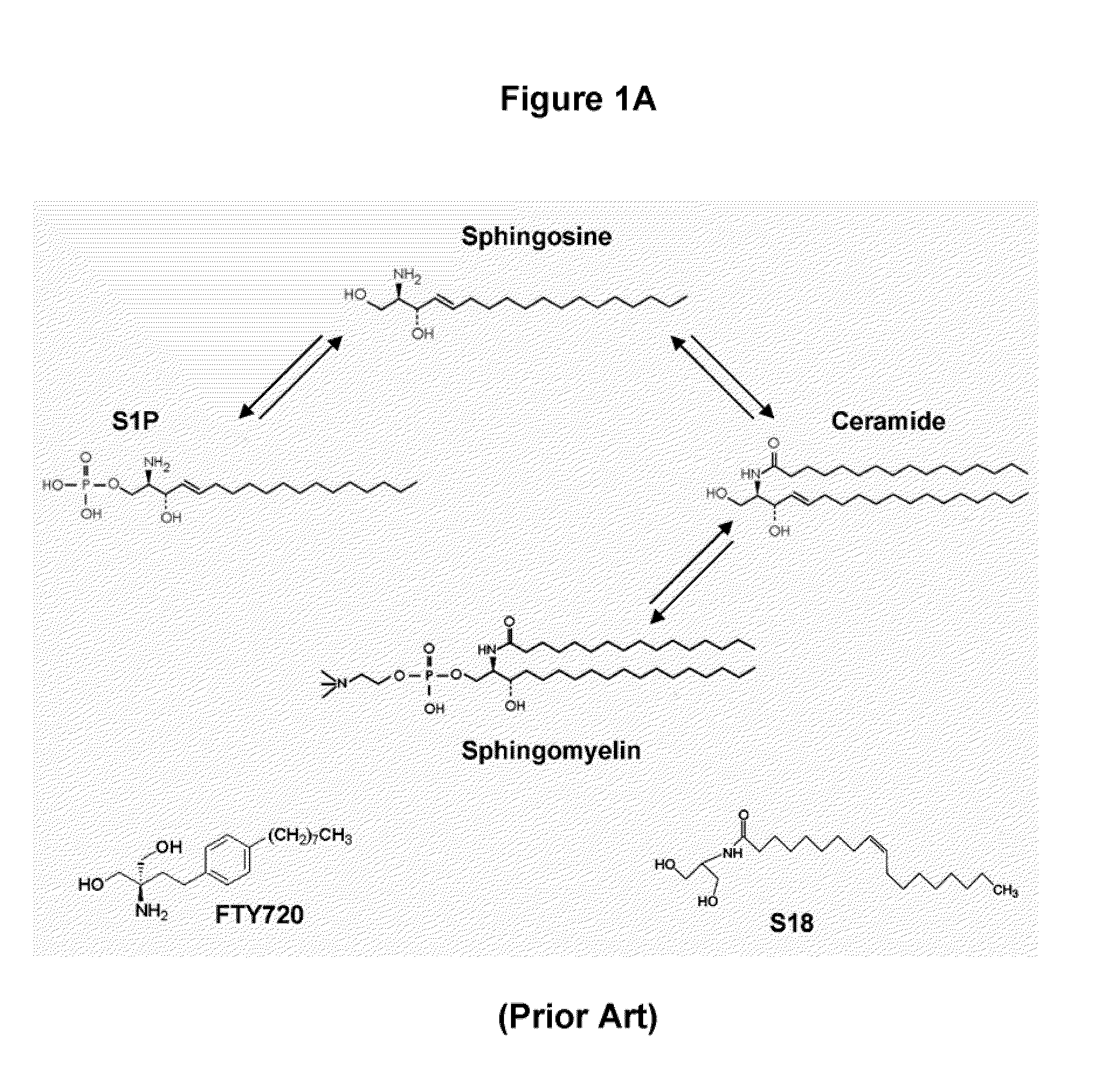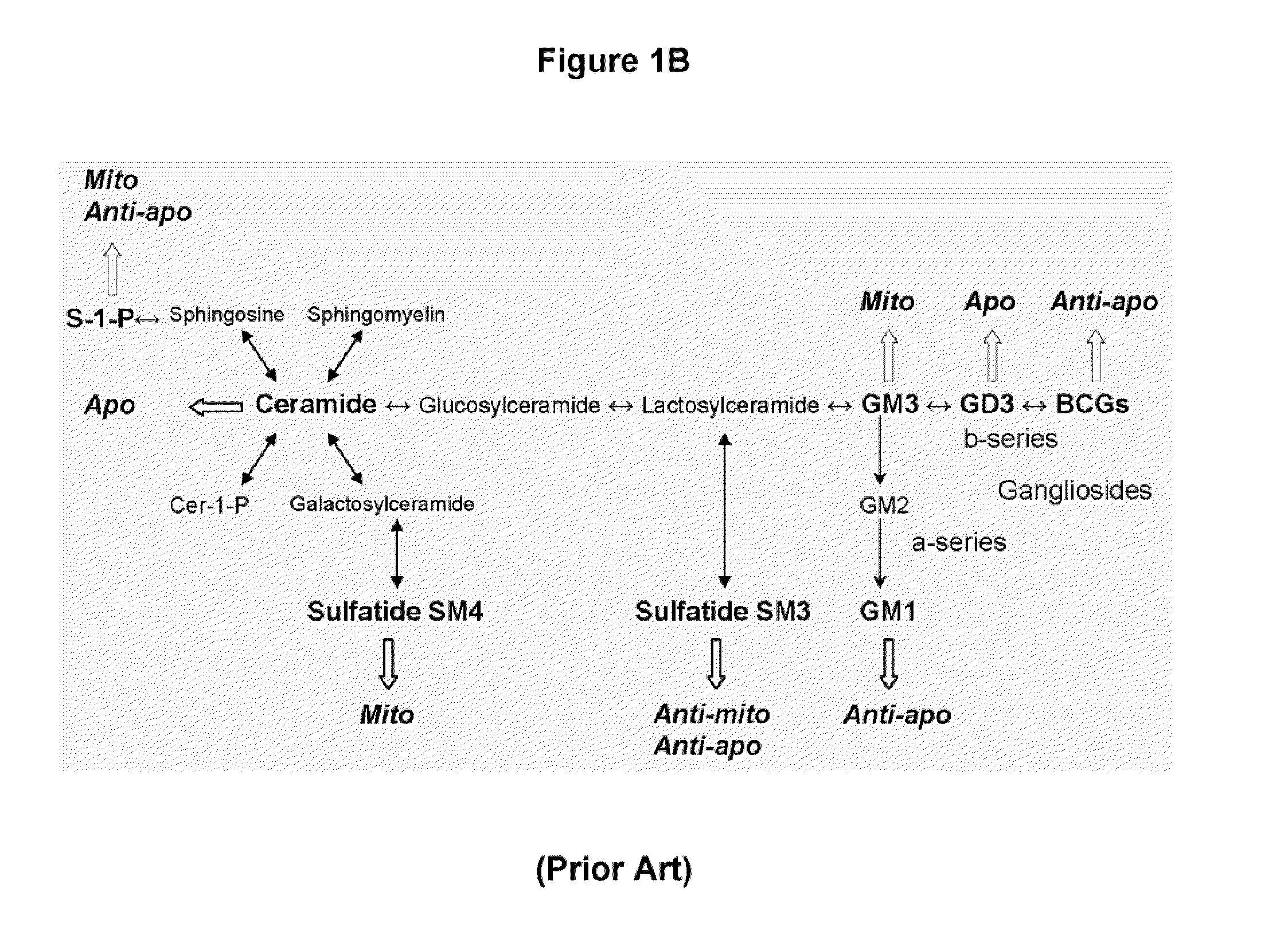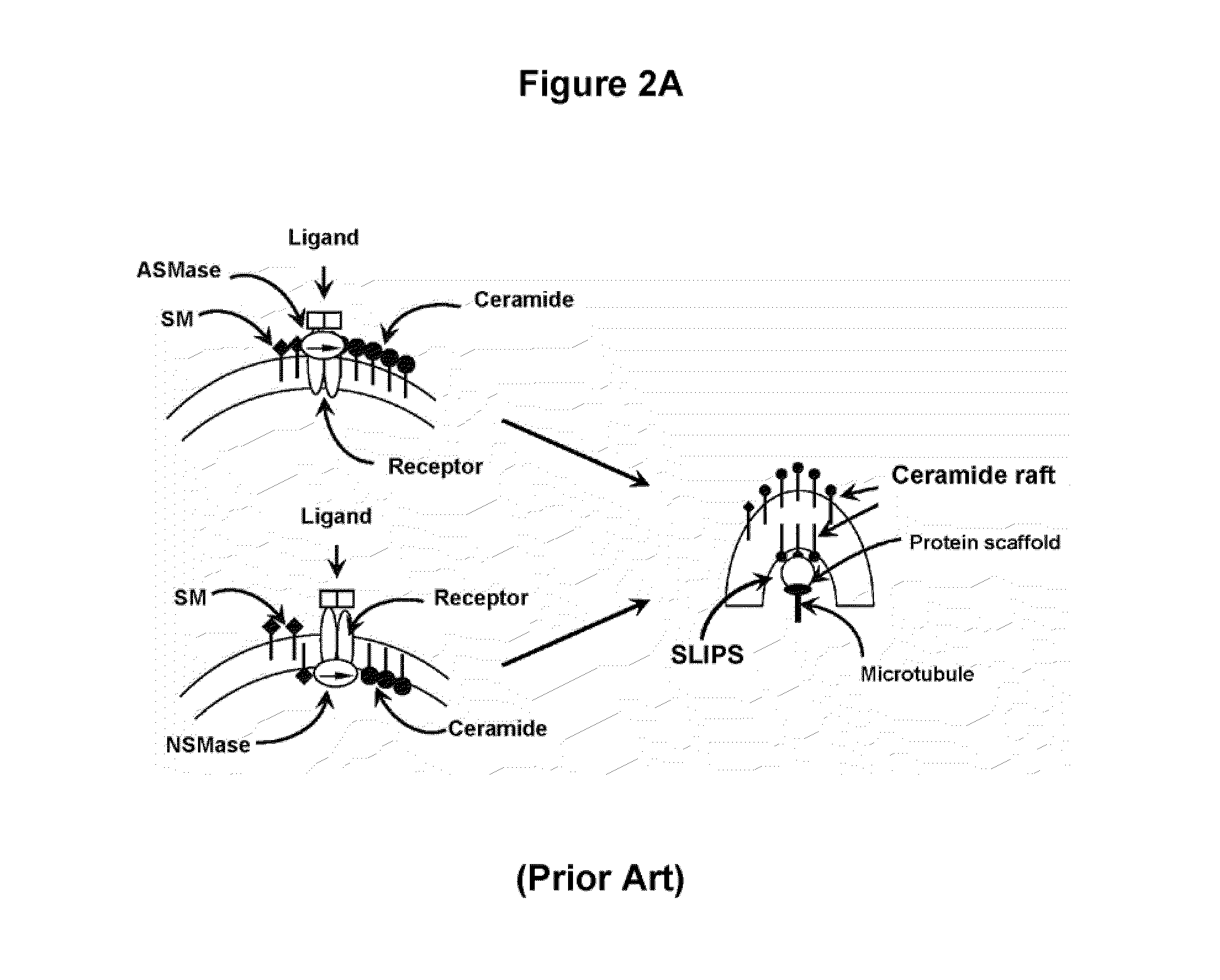Oligodendrocyte precursor cell composition and methods of use
a technology of oligodendrocyte precursor cells and composition, applied in the field of stem cells, can solve the problems of difficult to establish a profile of individual sphingolipid functions, inability to know which proteins to use, and difficult to identify sphingolipids, so as to prevent membrane association and reduce phosphorylation of gsk-3
- Summary
- Abstract
- Description
- Claims
- Application Information
AI Technical Summary
Benefits of technology
Problems solved by technology
Method used
Image
Examples
example 1
[0105]In Vitro Differentiation of ES Cells and Analysis of Markers for Differentiation
[0106]Pre-implantation blastocyst-derived ES cells (ES-J1, Rosa26, E14) were grown on γ-irradiated feeder fibroblasts, and neural differentiation was induced by serum deprivation of EBs as previously described. Attached EBs were dissociated and EB-derived cells (EBCs) plated on polyornithin / laminin-coated dishes. At this stage, cells were grown in DMEM / F12 supplemented with N2 and FGF-2 (EB medium). EBCs acquire all characteristics of genuine NPCs, including expression of nestin. Sox1, and FGFR1. In the presence of FGF-2, NPCs can be dissociated and propagated at >80% homogeneity.
[0107]This protocol was modified using S18 or S1P (or its analogs) for incubation of differentiating ES cells at the EB stage prior to and after dissociation. After incubation with 50-100 μM S18 and / or 0.1-2 μM S1P or S1P analogs for 48 h, EBCs were dissociated and then immediately re-plated, and further incubated with NP ...
example 2
Mouse Models for Myelin Deficiency
[0121]Mice that have neurodevelopmental defects were used to quantify the differentiation and functional integration of the grafted cells. Myelin-deficient mice allowed for the quantitation of graft-derived, myelin-specific protein (e.g., myelin basic protein (MBP), phospholipid protein (PLP)) using RT-PCR, immunoblot, or immunocytochemistry with post-transplantation tissue samples that contained fluorescently labeled cells. Two mouse models for myelin deficiency were obtained from Jackson Laboratories: shiverer (MBP deficiency, C3Fe.SWV-Mbpshi / J) and quaking (MAG splicing deficiency, B6C3Fe a / a-Qkqk / J). Cross breeding of shiverer and quaking has been shown to generate shi / qk double mutant mice that do not contain any central nervous system myelin. These mice live at least 100 days, which exceeds the period of myelin formation from grafted cells and allow for functional tests to quantify tissue recovery due to myelin regeneration (e.g., HPTLC for my...
example 3
Transplantation of NPCs and Quantification of Engraftment and Differentiation
[0122]NPCs (treated or not-treated with S18 and / or S1P or S1P analogs) were used for transplantation into the striatum of 6-12 days old C57BL / 6 mice by intracranial injection (bregma −1 mm, right hemisphere 2 mm off suture, 2 mm deep) of 105 cells in 5 μl of 0.9% sterile saline solution using a Hamilton syringe. The protocol also applied to adult brain or spinal cord with appropriate modifications to engraft cells. Cell survival and engraftment of NPCs with C57 wild-type mice were initially tested. Once having successfully established engraftment, the myelin-deficient mice were used. Equal numbers of viable untreated and treated cells were transplanted as determined by trypan blue staining. In previous studies, no labeled cell material was found in areas other than the injection site when dead cells were injected, demonstrating that any distribution different from the injection site is due to migration of t...
PUM
| Property | Measurement | Unit |
|---|---|---|
| incubation time | aaaaa | aaaaa |
| morphology | aaaaa | aaaaa |
| concentration | aaaaa | aaaaa |
Abstract
Description
Claims
Application Information
 Login to View More
Login to View More - R&D
- Intellectual Property
- Life Sciences
- Materials
- Tech Scout
- Unparalleled Data Quality
- Higher Quality Content
- 60% Fewer Hallucinations
Browse by: Latest US Patents, China's latest patents, Technical Efficacy Thesaurus, Application Domain, Technology Topic, Popular Technical Reports.
© 2025 PatSnap. All rights reserved.Legal|Privacy policy|Modern Slavery Act Transparency Statement|Sitemap|About US| Contact US: help@patsnap.com



